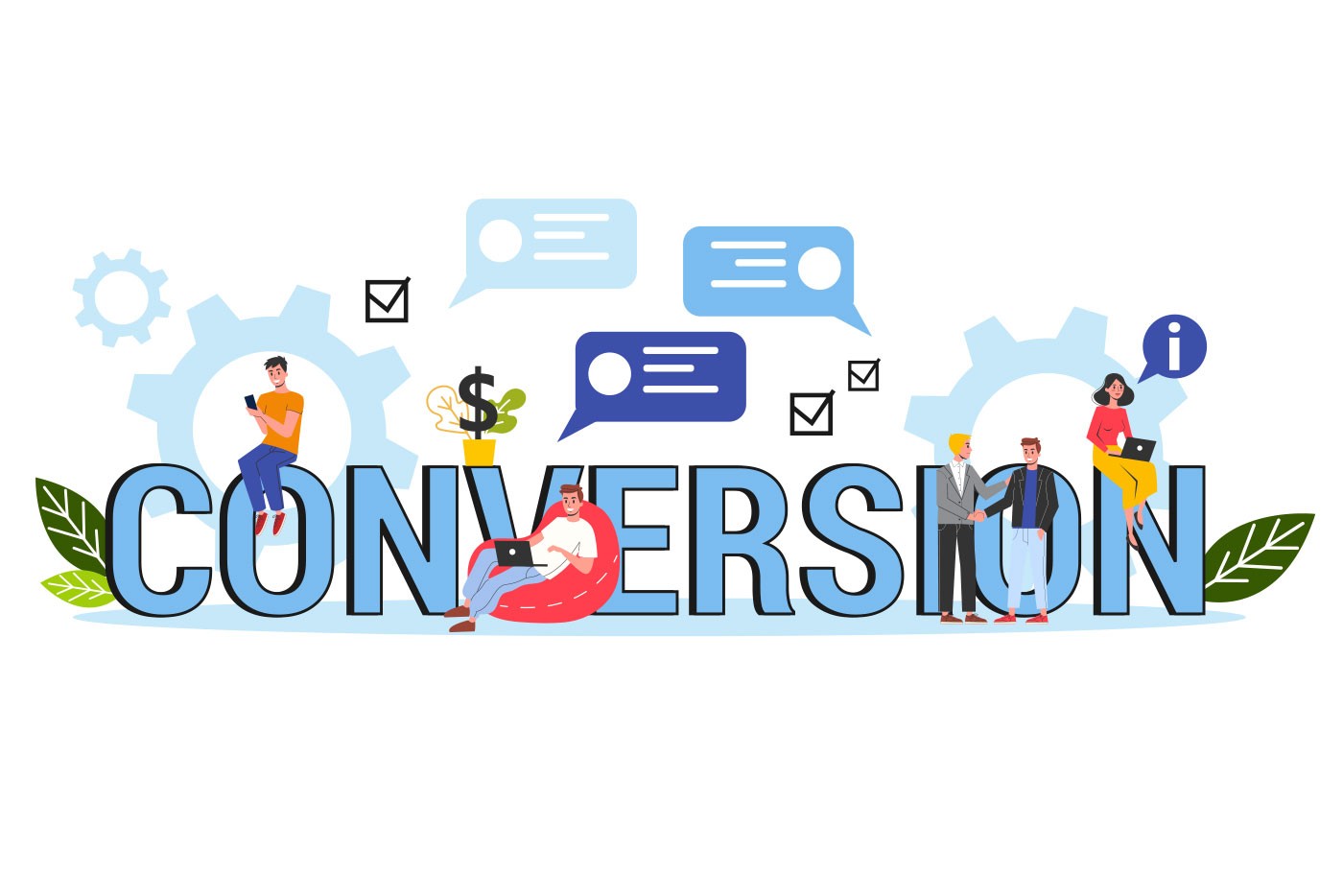The average rate of conversion points to the average number of visitors who follow the desired action line. For instance, if you had an eBook download page, you may want to know the number of visitors who viewed it and those who downloaded the book. In that case, (the number of downloads /numbers of page visits) x 100 = website conversion. The calculations may look easy since we have considered a single converting factor. Therefore, an e-commerce website owner may not achieve a correct conversion rate if they only account for the number of people buying a particular product. As a website owner, you should account for every page that turns a visitor into a lean when calculating your conversion metrics.
Websites in different industries have different conversion rates in digital marketing due to the different contexts and possible varied number of converting factors. Generally, a website can have a conversion rate of anywhere above 0%. For example, a new website that launched recently may not have had any clients yet, while a successful marketing company may have their rates up to or above 50%.
FACT: The first five seconds of page-load time have the highest impact on conversion rates. Website conversion rates drop by an average of 4.42% with each additional second of load time. (Hubspot)
What is a good, average conversion rate?
Now that a conversion rate can be anything, what value should you look to achieve? The answer here depends on the industry you work in, or at least where you fetch clients. According to surveys and studies conducted in 2021, the global e-commerce industry has a 2.86% average conversion rate. At the country level, the same industry has a 2.63% conversion rate in the United States. Therefore, e-commerce website owners should rate their websites based on this data. A conversion rate above 2% for an e-commerce shop is still reasonable in the US, but the owner should afford to reach the average.
Additionally, the conversion rates differ depending on the platforms used to access your e-commerce store, the source of traffic, product type, and the average order value, among other factors. See Intelligent Commerce for a summary of conversion rates based on some of these factors. In this respect, an established company with significant traffic coming from their regular emails and selling branded electronics may have better conversion rates than a clothing store where a single item cost less than $50.
Generally, marketing experts consider a good conversion rate to be above 10%. But like you will see in the upcoming section, many industries do not achieve this. In that case, you are better off looking at the average website conversion rate by industry. A reasonable conversion rate should belong to 10% of the highest conversion rates achieved using the sector-based strategy.
Average website conversion rate by industry
We mentioned that the conversion rates might vary in your industry. What happens when the conversion rate of your website when that of the industry is low? Can my website have a conversion rate higher than that of the general industry? First, website owners ought to know that conversion rates are not carved in stone. They often vary and are partially dependent on the effectiveness of the marketing strategies you use. Again, average means the sum of all values in a particular set divided by their count. As such, any website can have conversion rates exceeding industry averages. Here is the average website conversion rate by industry based on a recent Marketing Sherpa study.
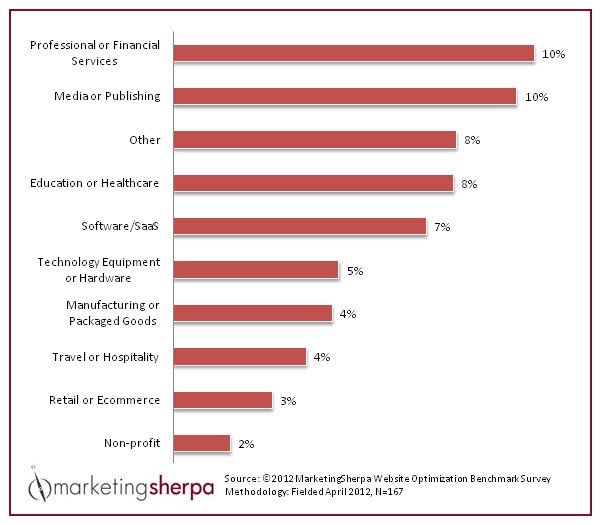
(Image Credit: Marketing Sherpa)
Look how the values vary. Technology equipment and hardware have a conversion rate of 5%, while the highest listed industries have a 10% conversion rate. Should you compare your ACR with this value? Definitely not. Considering the average website conversion rate by the industry remains the logical assessment method. Therefore, if you are into financial and professional services, comparing your ACR with that of technology, companies will give a false performance metric indicating that your website has a very low or high conversion rate. On the other hand, if your website is in the technology and hardware category and with a conversion rate of 1.9%, benchmarking with the non-profit organizations gives you a false indicator that you are doing well while you are way below the average.
What are conversions, and how do you measure them?
Departing from the general average conversion rate definition, a more precise description would include the context. Often, people measure conversions as the number of leads that turn into paying customers. But not every business is selling services or products. For instance, non-governmental organizations may not have goods and services to sell but may have a monthly newsletter subscription system. ComE-Commercelets may also want to measure the number of people who get back to check their cart after an abandoned cart email. Clearly, measuring these efforts can help you determine ROI and make the necessary plans.
Here are the most popular categories of conversions measured by website owners.
- A user subscribing to your mailing list.
- Opting in for a monthly/weekly newsletter.
- Submitting an email to receive a quotation.
- Submitting an email to get white paper download instructions.
- Clicking on any form of a call to action on a website/email.
A visitor is categorized as a qualified marketing lead if they interact with your website in the above ways. Such interactions tell you that a client will likely convert with little or no convincing since they are interested in what you have to offer. Tracking what users do and what features they interact with while visiting your website helps you or your marketing team decide what efforts must be taken to turn users into buyers. Therefore, every action taken can have an associated score indicating where they belong in the buying cycle.
Sales qualified leads, on the other hand, are users who are ready to make a purchase. These are the individuals for whom sales follow-up emails are created. And since these are the people driving revenue to your business, you would instead take care of the small number than concentrate on other forms of conversions for companies that are actually selling.
Test your SEO in 60 seconds!
Diib is one of the best SEO tools in the world. Diib uses the power of big data to help you quickly and easily increase your traffic and rankings. We’ll even let you know if you already deserve to rank higher for certain keywords.
- Easy-to-use automated SEO tool
- Keyword and backlink monitoring + ideas
- Speed, security, + Core Vitals tracking
- Intelligently suggests ideas to improve SEO
- Over 500,000k global members
- Built-in benchmarking and competitor analysis
Used by over 500k companies and organizations:
Syncs with 
Average Conversion rate: External Factors
Platform/device
The platform from which your visitors access the website impacts the conversion rates. Tablets and desktop users are more likely to convert on the first visit than smartphones and other device users. For instance, in the first quarter of 2021, the conversion rates associated with tablets was 2.92 percent, that associated with desktops stood at 1.98 percent, while smartphones had an average rate of 1.81.
Compared to the platform running the devices, Windows leads the pack with Macintosh coming second and Chrome OS occupying the third place. The first quarter of 2021 saw:
You Might Also Like
- Windows devices get an average rate of 4.94 percent.
- Macintosh recorded a 3.78 percent conversion rate.
- Chrome OS, Android, iOS, and Windows Phone gathered 2.9, 2.8, 1.88, and 0.5 percent, respectively.
- Linux came last among the popular platforms with a conversion rate of 0.02 percent conversion.
Other factors include payment source, traffic source, and the industry.
Can marketing automation increase a website’s conversion rates?
Marketing automation aims to drive more traffic, generate, and nurture leads for your online business. The objective is to bring more people to the sales funnel and convert many of these to buyers. Therefore, you would not go wrong if you used marketing automation methodologies to increase the average website conversion rate with time. The average conversion rate of ecommerce is easiest to grow since you are dealing with tangible goods. Here is how to use automated marketing to improve conversions
- Use activity-triggered marketing
Users often engage in various activities on your website. From the average conversion rate definition, we already know what a user clicks and the pages they visit, and any other actions they may take. The data collected from activity monitoring can fuel your marketing campaign and, in turn, increase the average conversion rate in digital marketing. Essential activities for this purpose include price comparisons, abandoned carts, and several visits to a product page in a short while. You can send an automated email to initiate a conversation with a client if you notice any of these activities on their account. For example, you can offer a conditional discount to a user on the product they have looked at several times in a short while.
- Personalized marketing
Personalized marketing is increasingly becoming the norm of the day. Marketing experts and website owners are no longer sending generalized emails to their prospects. Instead, they take time to learn the ideal buyer and then use marketing tools like HubSpot, Marketo, and others to create high-quality marketing content that aligns with a particular buyer’s interests. According to Michael McNew, marketing automation can increase your sales by up to 20%.
- Incorporate a referral benefit on your website
Referral benefits are enticing. Regardless of what one gains in referring others to the website, the point is that they will eventually bring more people to your website. People referring others have either tested your products or services or are after the referral benefits. For instance, you may pledge to offer a particular service at a subsidized price if they refer five buying clients to your store. This approach has been used successfully in the finance and professional services industries and can work well for others. For example:
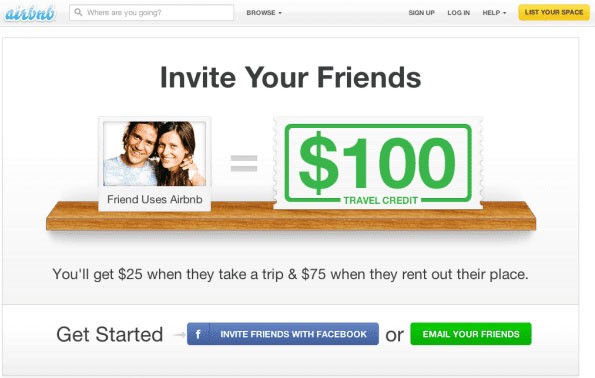
(Image Credit: Referral Candy)
- Optimize lead pass-off timing
Managing leads has never been easy. The hardest part of the process is perhaps determining the right time to pass off the sales team’s prospects. If the marketing team happens to pass them before they are ready to buy, they may flop. If a lead has previously purchased from your website and is frequently visiting the website recently, you can consider them fit and put them in the sales funnel. However, it is not as easy when dealing with new leads. Therefore, the sales team must find the optimum time to pass off prospects to the sales funnel.
Other ways to increase your customer conversion rate besides marketing automation
- On-site messaging
On-site messaging is one way to attract customers who would like to talk to a sales representative or customer support assistant. A staffed live chat system can significantly increase the customer conversion rate if the attendant can quickly and professionally respond to user queries. And it would be best if you used an automated (robot), make sure it is intelligent enough. Here are two examples of live chats that were helpful to their clients:
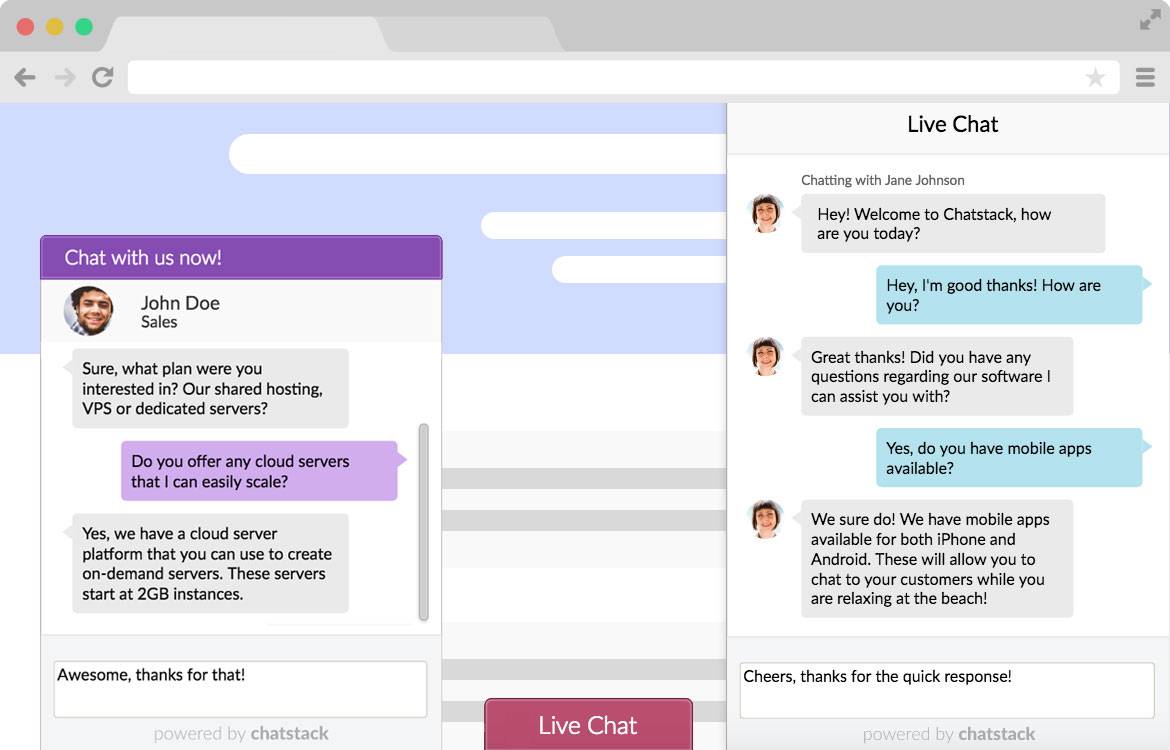
- Optimize your call to action
The wording, colors, and placement of your call to action might be the reason your copy performs dismally. To start with, change the words on the call-to-action, make them short and catchy, but meaningful. If no improvement occurs, go ahead and play with the placement of the call to action and later the colors of both the text and the button or link hover color. For example, you might want to add an arrow to draw attention:

(Image Credit: Wow Group)
- Have the free-world mentality
Did you ever imagine the number of clients who step back after that sign-up page pops up when one is checking out? Don’t even think about it since you may well know it is difficult; it is to get people to give out their details. Allowing people to check out without registration can boost your successful sales.
- People love gifts. Give them out
You will agree that people love freebies. For this reason, attaching a gift to a service or product on your website could make all the difference. Make sure it is something your visitors would like to have. Additionally, note that a valuable gift related to the service or product on sale would have a better result than if the two were unrelated.
- Implement urgency in your call to action and buttons
Your call-to-action is your chance to trigger a sense of urgency in the purchase. Therefore, using words that express urgency and quick action can improve your average conversion rate digital marketing in e-commerce. Tell them to “Order now” and use the line “**limited time offer, valid until (date)” and see the wonders. Popular websites are already leveraging the power of urgency by implementing the power of countdown timers. For instance:
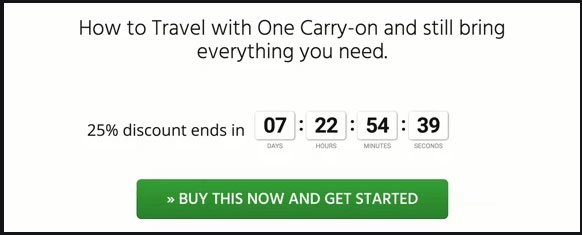
(Image Credit: Thrive Themes)
- Use a few fields when collecting data.
Entrepreneur says that using multiple input fields when collecting user data can reduce conversion rates by 10% and above. Therefore, you should strive to use the least number of fields and only collect the necessary information. For instance, a newsletter subscription opt-in form should not exceed two fields. Below is a good example of using few fields when collecting data:

(Image Credit: BigCommerce)
- Indicate the benefits of your service or product
One more tweak that can increase the average customer conversion rate involves the services you sell. Including a description of how people will benefit from your goods and services can catch a significant number of visitors who would otherwise skip. Remember to make the descriptions short, catchy, and meaningful.
We hope that you found this article useful.
If you want to know more interesting about your site health, get personal recommendations and alerts, scan your website by Diib. It only takes 60 seconds.
Are Ad conversion rates related to website conversion rates?
Ad conversion rate refers to the number of ad interactions resulting in a sale (intended outcome) compared to that ad’s general interactions. Ad conversion rates are calculated in the same way as website conversion rates but now using ad interactions replacing website sessions. Since advertisements form part of the marketing strategy, they are useful when determining conversion rates in digital marketing.
Ad conversion rates directly influence the average conversion rate of ecommerce when you advertise products on premium advertising platforms. Even for people who sell services, adverts increase the average customer conversion rate. Therefore, the general conversion rate of a website often includes traffic coming from advertisements.
Separating ad conversion from website conversion
We previously mentioned the various items that can affect website traffic and conversion rates, even though briefly, and traffic source was on the list. Ad conversion results from traffic reaching your website from outside sources, says PPC advertising, for instance. Separating this kind of conversion from your average conversion rate digital marketing would require you to segment the conversion rate depending on the traffic source. After segmentation, the average website conversion rate would be conversions emanating from other traffic types except for ad conversions.
Ad conversion rates can help you determine the ad campaign’s viability and calculate the ROI when used as a single factor. However, you may need to eliminate it from your website’s average conversion rate digital marketing strategy to estimate how other traffic sources are faring.
Does conversion rate mean anything?
Even though industry average rates are available in public databases, few people can tell what the figures mean. However, with the knowledge you have gained from this article, you can determine if your website is on track and assess the ROI of your marketing efforts. Additionally, you can use the information provided herein to improve your ROI.
This article has presented you with the average conversion rate definition, factors that affect the conversion rates, and some of the best methods you can use to improve your conversion rates. The global e-commerce industry has a conversion rate of 2.86%, but different industries have varying rates. One should only assess their website using industry-based conversion rates since the global average is vast. The average rates may depend on your goods and services’ demand and partly tied to your sales and marketing teams’ expertise or experience.
Diib®: Expert Conversion Rate Tracking and Monitoring!
Whether you’re a new website owner or have been around for years, learning to convert your customers is an ever evolving process. Tracking your conversion rates can give you a good idea of your website/webpage health. Learning to read and interpret the metrics can be difficult. Diib Digital offers a comprehensive dashboard designed to give you actionable insights into your conversion rates and how to improve them easily. Here are some of the features that set us apart from the crowd:
- Customized Objectives give you simple tasks designed to optimize your website
- Alerts that tell you about your Domain Authority other technical SEO issues
- Conversion rate monitoring
- Post performance
- Broken pages where you have backlinks (404 checker)
- Keyword, backlink, and indexing monitoring and tracking tools
- User experience and mobile speed optimization
Click here for your free scan or simply call 800-303-3510 to speak to one of our growth experts.
FAQ’s
To calculate the average conversion rate you need to divide the number of conversions you received by the total number of ad interactions in the same period of time. For instance, if you had 90 conversions with a total of 1,000 interactions your conversion rate would be 9%.
If your conversion rate is higher than 10% it is a good conversion rate. Some businesses average a conversion rate of about 11.45%. If you can get a decent conversion rate your company will place at the top 10% of advertisers across the world which will cause your conversion rate to continue to climb higher and higher.
A report from WordStream said that a conversion rate of 2.35% was average for pay-per-click campaigns. This was after three months of study on that campaign.
If you have very low visitor counts and/or very long visitor sessions this can confuse your analytics page into thinking your conversion counts are more than your visitor counts. It will then say you have a conversion rate higher than 100%.
If you are wondering why your conversion rate is dropping first check your analytics tracking code. If the code hasn’t been installed correctly or needs to be updated it can cause a drop in your conversion rate.
